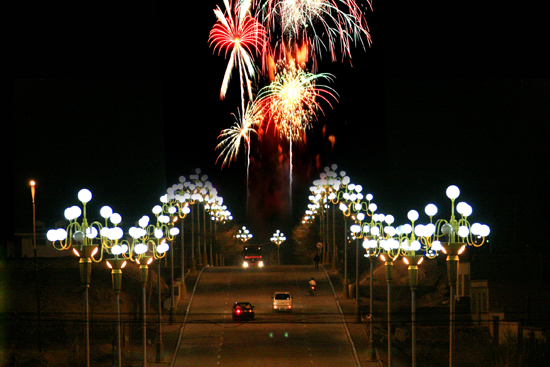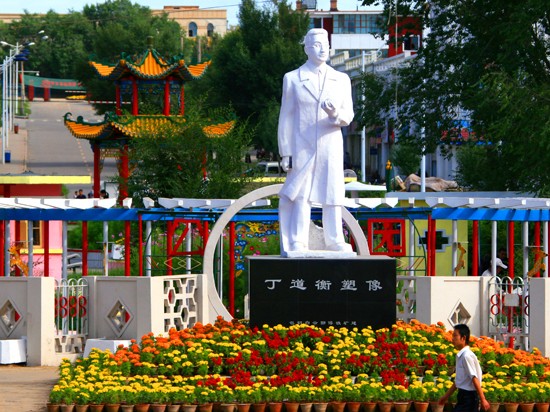Bayan Obo mining district

Xitu Street in Bayan Obo mining district in Baotou [Photo provided to chinadaily.com.cn]
Established 1958, Bayan Obo mining district is a district abundant in mineral resources and roughly translated from Mongolian, Bayan Obo means "rich mountain".
It is a national level independent industrial and mining district on the site where the story of heroic sisters -- Rongmei and Yurong -- reputedly took place. According to local legend, the two heroic sisters risked their lives to protect their herd in the mining district, in an uplifting tale that has been translated to art, dance and even a children's ballet.
The independent industrial and mining district is one of the special type of resources-based areas that have come into being with the development of mineral resources. The dominant industry is mining and processing, operations which are far away from the central urban area -- and the district has relatively independent economic and social functions.
Bayan Obo mining district covers an area of 328.64 square kilometers. It has two sub-district offices and four communities and there are 27,600 people in 11 ethnic groups living in the district -- including Mongolia, Han and Hui people.
Of these, 22,100 employees and family members are linked to Bayan Obo Iron Mine, accounting for 80 percent of the total population of the district.

A sculpture commemorates Ding Daoheng, stands in Bayan Obo mining district in Baotou [Photo provided to chinadaily.com.cn]
Ding Daoheng, a geologist, discovered that the area was rich in minerals after undertaking a scientific expedition to the Inner Mongolia autonomous region in 1927.
The Bayan Obo Iron Mine in the district is a large-scale operation extracting iron, rare earth, niobium and other valuable metals, covering a total area of 48 square kilometers with five major ore bodies. More than 71 chemical elements and 175 minerals have been exploited.
Known as the "hometown of rare earth", it is also the main raw materials base of Baogang Group.
The district is one of the major wind areas in China, with an average annual wind speed of 5.5 meters per second and a maximum wind speed of 26 meters per second. The average amount of sunshine per year is more than 3,200 hours and the annual sunshine rate is 74 percent.
All these factors make the district very suitable for the development of the clean energy industries, such as wind power and solar power. Currently, 200,000 kilowatts capacity of wind farms have been installed and 90,000 kilowatts capacity of solar power parks have been installed.
Related reading:
